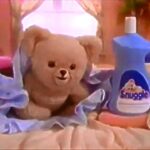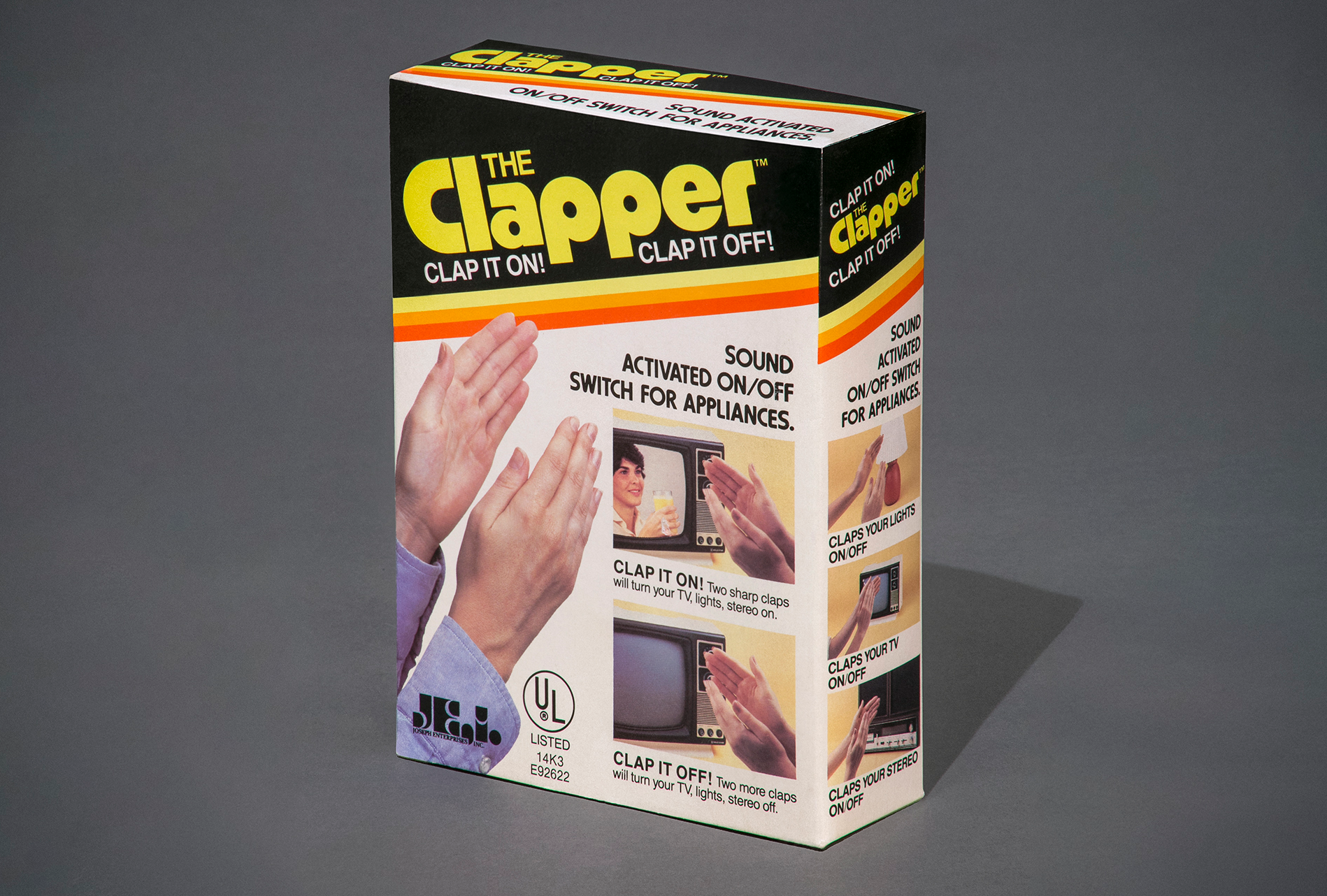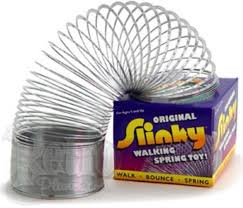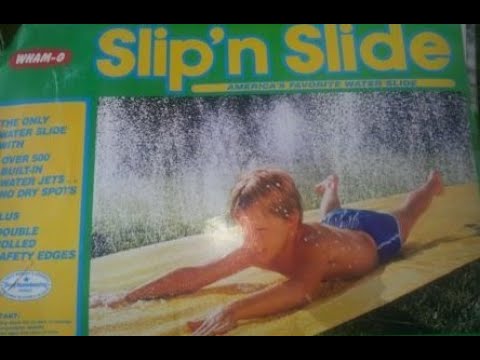 Amidst the glitz, neon, and synthesizer soundtrack of the 1980s, one tiny, fuzzy figure managed to cut through the noise—not with loud colors or flashy slogans, but with a gentle giggle, a cozy hug, and the promise of softness. That figure was the Snuggle Bear, the unlikely but unforgettable mascot of Snuggle fabric softener. Born in an age of larger-than-life mascots like the Kool-Aid Man and Tony the Tiger, Snuggle Bear stood apart. Where others shouted, he whispered. Where they leaped, he snuggled. And somehow, in doing so, he became one of the most beloved advertising icons of the decade.
Amidst the glitz, neon, and synthesizer soundtrack of the 1980s, one tiny, fuzzy figure managed to cut through the noise—not with loud colors or flashy slogans, but with a gentle giggle, a cozy hug, and the promise of softness. That figure was the Snuggle Bear, the unlikely but unforgettable mascot of Snuggle fabric softener. Born in an age of larger-than-life mascots like the Kool-Aid Man and Tony the Tiger, Snuggle Bear stood apart. Where others shouted, he whispered. Where they leaped, he snuggled. And somehow, in doing so, he became one of the most beloved advertising icons of the decade.
Snuggle Bear made his debut in 1983 as the centerpiece of the brand identity for Snuggle fabric softener, a product owned at the time by Unilever. The goal was to convey the softness and freshness that the product promised to deliver to laundry. While many competing brands focused on scientific-sounding claims, mechanical demonstrations, or imagery of static cling, Snuggle opted for something simpler and more emotionally resonant. Enter Snuggle Bear: a small, beige teddy bear who would quite literally climb into warm, freshly folded laundry and roll around with unfiltered joy.
Created by the ad agency Tatham-Laird & Kudner and brought to life through puppetry and animatronics, Snuggle Bear was immediately memorable. Designed to be cute but not cloying, fuzzy but not overly cartoonish, he struck the perfect tone. With a soft, high-pitched voice and a gentle demeanor, he became a comfort character. The original voice of Snuggle Bear was provided by Corinne Orr, a veteran voice actress known for her work in classic animated shows like Speed Racer. Her delivery of Snuggle’s signature lines—“Snuggly softness that’s really less expensive,” and later, simply “Let’s Snuggle!”—cemented the character’s persona in the minds of viewers.
The commercials were meticulously crafted mini-narratives. Snuggle would be seen popping out of laundry baskets, sliding down piles of fluffy towels, or wrapping himself in freshly washed sheets. Everything he touched became visibly softer, as if imbued with magic. Sometimes he’d interact with a human hand or voice, but more often he existed in a miniature world of fabric, towels, and linens—his cozy kingdom. These ads struck a chord, especially with families. Mothers and children alike responded to the bear’s endearing antics and the emotional warmth of the commercials.
While the product itself—fabric softener—might have been an everyday item, the mascot turned it into something more. Snuggle Bear didn’t just advertise softness. He represented comfort, security, and care. In a world that was increasingly fast-paced and chaotic, especially as more households saw both parents working and kids coming home to empty houses, the idea of a cuddly, ever-present friend nestled among your laundry offered unexpected emotional appeal. Snuggle Bear essentially gave personality to a product category that previously relied on scientific-sounding formulas and static-fighting claims.
From a marketing standpoint, Snuggle Bear was a masterstroke. His character gave the brand continuity across campaigns and years. While packaging and slogans might evolve, the presence of Snuggle Bear tied it all together. Kids began to associate the character with bedtime and bathtime, while adults saw him as a reminder of cozy, clean clothes for their families. The plush comfort he stood for was not just symbolic—it was tactile. And that connection proved incredibly powerful.
As the 1980s wore on, Snuggle Bear’s popularity only grew. He began appearing in print ads, on in-store displays, and even as a plush toy. These stuffed versions of Snuggle Bear became collectibles in their own right, and many children began asking for their own “Snuggle Bear” to sleep with—transforming what was initially a promotional gimmick into a genuine product line extension. Unilever recognized the value in this, releasing limited-edition plush bears as premiums through mail-in offers or holiday promotions. For a company in the business of laundry care, they had managed to generate the kind of consumer attachment normally reserved for fast food mascots or Saturday morning cartoon characters.
Beyond his immediate commercial success, Snuggle Bear also influenced how brands thought about mascots in general. Up to that point, mascots were often boisterous, competitive, and filled with exaggerated energy—think of the Trix Rabbit, the Froot Loops Toucan, or Cap’n Crunch. Snuggle Bear was different. He was soft-spoken, sweet, and deliberately calming. His success proved that not every brand needed to be loud to stand out. Sometimes, it was the gentle touch that left the biggest impression.
It’s worth noting that the 1980s were a unique time in advertising. Children’s programming was exploding in popularity, and so were regulations about marketing to children. Many companies found ways to work around these constraints by appealing to parents and children simultaneously. Snuggle Bear existed in a kind of liminal advertising space—he was cute enough to charm children but tethered to a product that was unmistakably adult in nature. This cross-generational appeal gave Snuggle Bear incredible staying power.
As the 1990s approached, Snuggle Bear maintained his spot in the commercial rotation, even as ad trends shifted. The bear himself received periodic updates, with improvements in animatronic technology making him more expressive and lifelike. The voice acting also shifted slightly over time, with different actors bringing slightly new interpretations, but the core personality remained intact. Unilever continued to lean heavily on Snuggle Bear as the face of the brand, even as it introduced new product lines like dryer sheets and scent-boosting softeners.
In time, the bear even became a kind of pop culture figure. References to Snuggle Bear popped up in comedy sketches, cartoons, and satirical pieces. He was parodied for being “too soft” or excessively sentimental, but even those jokes underscored just how recognizable and ingrained he had become in the cultural fabric. It takes a special kind of mascot to be worthy of both affection and satire.
While Snuggle Bear is still part of the brand today—now owned by Henkel since its acquisition from Unilever in 2008—his presence is somewhat more subdued. Modern marketing landscapes have changed, relying more on influencer culture, digital engagement, and product reviews than on traditional mascots. Still, Snuggle Bear appears on packaging, in online content, and occasionally in commercials, albeit with updated visuals. His fur is a bit more high-resolution, his movements slightly more CGI, but the soul of the character remains the same.
For many people who grew up in the 1980s, Snuggle Bear is remembered not just as a marketing tool, but as a cozy part of childhood itself. The scent of clean laundry, the warmth of a fresh towel, and the sight of that soft, smiling bear all come together in a sensory memory that’s difficult to shake. He was never pushy, never loud—he was always there, giggling, hugging, and reminding us that comfort could come in the form of something as simple as a well-washed blanket.
The 1980s were filled with mascots, but few achieved the emotional resonance of Snuggle Bear. He didn’t fight for attention—he invited it gently. He didn’t shout to be heard—he whispered to be felt. And in a world that often prizes the loudest voice in the room, Snuggle Bear proved that a soft touch could leave the most lasting impression.


